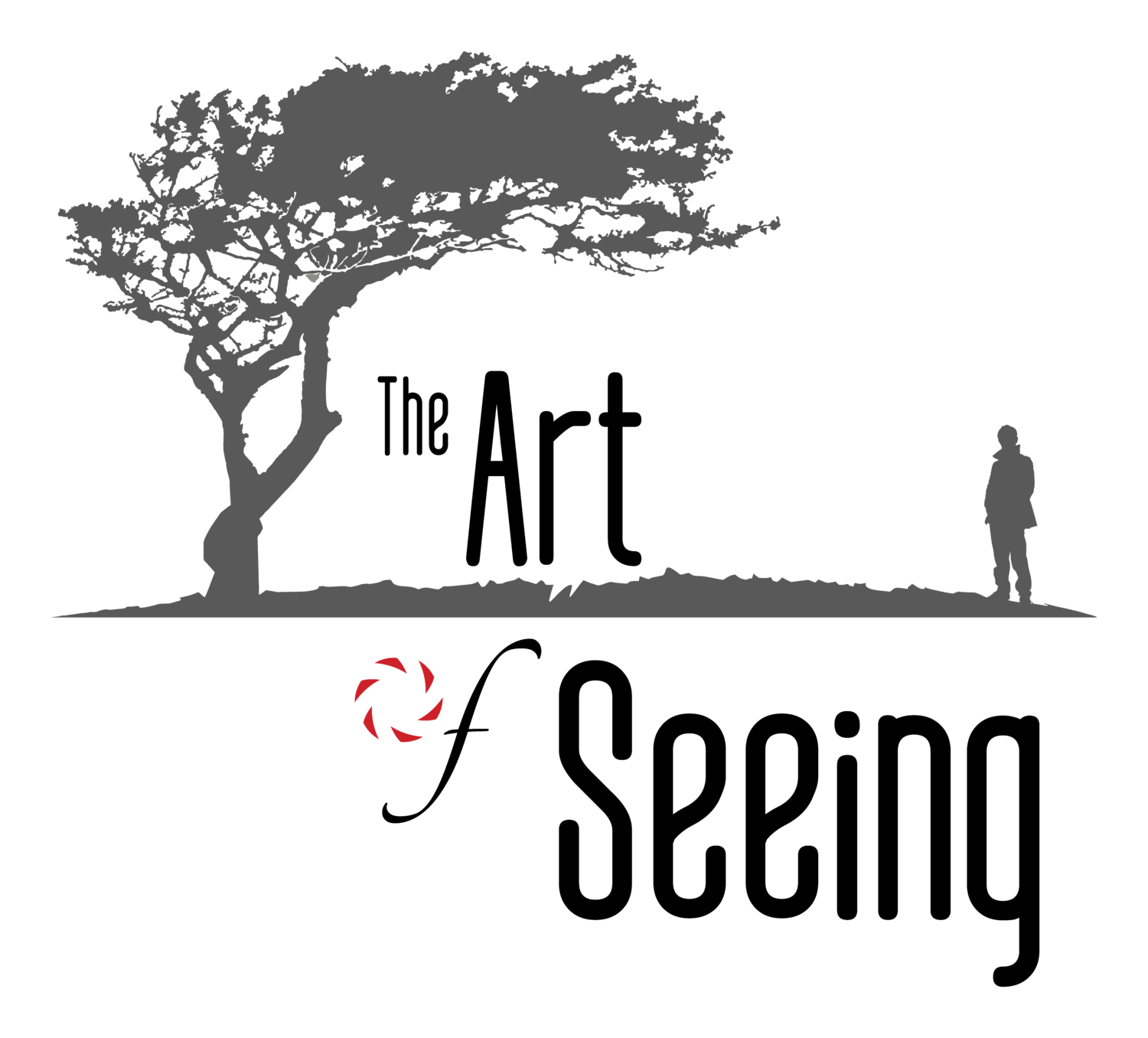
Insights and musings about photography and the creative process
Phone It In. Seriously.
It turns out that the camera in your pocket is a powerful too for developing your Photographer’s Eye and sharpening your creative vision. Since most of the technical decisions are made for you, a phone camera frees you to focus on the image, which, after all, is what really counts.
The other day, on the home stretch of my morning run, I stopped to snap a photo. The dense fog that morning gave everything around Ballona Creek a mysterious, ethereal look. The diffused sun rising across the water looked interesting, so I pulled my phone out of my pocket and clicked a few frames. Hmm, not as cool as it looked, I thought reviewing my images on screen. Oh well. Then I noticed the bridge, that looked cool too. Maybe that will make a better picture. A couple more snaps. I should get lower, I thought. So I picked my way down the rocks lining the creek bank. More snaps...a little better. I need to get home and start my day, I thought climbing back up to bike trail. Just then, a cyclist whizzed by and disappeared into the fog. Wow, that looks cool...just need to wait for another biker. You see where this is going, right? An hour and 159 snaps later I thought, I really have to get home. I ended up with a handful of keepers from that morning, mostly courtesy of a lovely egret hanging out on the docks. So I guess my point is partly about serendipity, which has a way of showing up whenever you follow your instincts. But it’s also about how easy it is to slip into what I call C-mode (creative mode) when you are shooting with your phone. That’s a good thing.
It turns out that the camera in your pocket is a powerful too for developing your Photographer’s Eye and sharpening your creative vision. Since most of the technical decisions are made for you, a phone camera frees you to focus on the image, which, after all, is what really counts. It also removes a lot of the creative pressure of doing 'serious photography', which ironically makes you more creative. I know I feel a lot more instinctive and spontaneous when I'm shooting with my iPhone. For those pixel peepers obsessed with image quality ('IQ'), I agree we haven't reached DSLR quality in our smartphone cameras yet, but let me ask you: How many iPhone billboards did you drive under this week? Those 20X50 foot (printed) images really were shot on a phone. Just how much 'quality' do you need?
One key to making great images with your phone camera is taking an intentional approach when you shoot. In other words, be serious, but don't take it so seriously. Lighten up, but make conscious choices. Pay attention to framing and backgrounds. Try variations. But mostly, give your brain a break and listen to your gut. Look at your images and notice your first reaction but don’t analyze too much. Let yourself be lost in that wordless state where you’re feeling more than thinking. If you can’t remember later what you were thinking when you took those pictures, you did it right.
To see more examples of smartphone camera photos, check out Ken's iPhoneography Gallery
I'd love to see some your favorite phone images. Post a link in the comments or upload your images to Instagram with hashtags #phoneitin and #artofseeing
Inspiration from Your Couch
My favorite way of refueling the inspiration gas tank whenever I'm feeling creatively blah is going somewhere I've never been before and disconnecting myself from the rest of humanity for a bit. But let’s face it, none of us get to do this nearly enough.
My favorite way of refueling the inspiration gas tank whenever I'm feeling creatively blah is going somewhere I've never been before and disconnecting myself from the rest of humanity for a bit. But let’s face it, none of us get to do this nearly enough. Thankfully, the internet is full of amazing content creators who make it possible for us to travel through space and time and jumpstart our creative batteries without ever leaving our living room couch. I guess that’s a good thing?
Netflix
Netflix has been killing it lately with their original content and these two recently released docu-series are binge-worthy content for any photographer: Tales by Light follows a different photographer in each episode (6 so far) as they explore exotic locations and go to physical extremes to create breathtaking images. Check your pulse if your wanderlust doesn't spike after watching a couple episodes.
Abstract: The Art of Design focuses more on the creative process than photography per se but is just as applicable to us shutterbugs. Each episode delves into the mind of a leading artist/designer to understand their approach to problem-solving and their insights on the nature of human creativity. I'm still working my way through the series but I can highly recommend episode 1 (Christoph Nieman - Illustration) and episode 7 (Platon - Phootgraphy). I think it's a safe bet that the remaining episodes are equally engaging.
Finally, it’s shameless plug time: most of you don’t know that I produced a documentary film recently. Well, it’s finally made it to Netflix (also available on Amazon , Hulu & iTunes). It’s called In Search of Balance and it has nothing to do with photography, but if you’re interested in the intersection of human health and the natural world including topics like the human microbiome and ‘beyond organic’ natural farming, give it a try. If you like it, your review/rating would be very helpful. You can get more info about the film and see the trailer here
YouTube
No person who ever clicked a shutter is better known than Ansel Adams. But even (or especially) amongst photographers, he’s appreciated more as a master technician than as a great artist. As the inventor of the Zone System and a darkroom virtuoso, Adam’s chops as a master craftsman are indisputable. But Adams was an equally great artist in the truest sense of the word. The PBS film, Ansel Adams, A Documentary Film, captures both sides of the legend. It’s a bit embarrassing to admit but I’ve practically memorized the opening monologue by John Szarkowski. It’s one of the best articulations of what photography, or art for that matter, is ‘about’...at least in my opinion. Highly recommended.
Maybe I’m just slow, but I just discovered Ted Forbe’s Art of Photography YouTube channel (285K subscribers, 17M views). Ted is an amazingly prolific producer of videos on all aspects of photography including artist profiles, photo gear, techniques and the history of photography. I’ve barely scratched the surface but I can tell you that the content I’ve seen is very well produced and thought out. His profile on legendary photojournalist W. Eugene Smith is outstanding. It easily holds its own against any commercially produced documentary in terms of both content and production values. I don't agree with everything Ted says but I am in awe of the volume he outputs and I deeply appreciate the service he freely provides. Check it out.
Your Picks
This list is far from exhaustive. I’d love to know if you've discovered any gems related to photography on the interwebs. Let me know in the comments.
Photo Tip: Use Fuzzy Logic for Sharper Compositons
It’s pretty much an automatic reflex with most photographers to press the shutter button halfway to activate the autofocus as soon as they put their eye to the viewfinder. And why not, what’s the value of looking at a blurry image? Well, there’s a lot of value I think.
It’s pretty much an automatic reflex with most photographers to press the shutter button halfway to activate the autofocus as soon as they put their eye to the viewfinder. And why not, what’s the value of looking at a blurry image? Well, there’s a lot of value I think. In fact, I would say that at this point I do the majority of my composing looking at an out of focus image. As counterintuitive as it might seem this practice really helps me ‘see’ compositions much more clearly. When you look at a blurry image all you can really make out are the major shapes and tones in the frame, which are exactly the elements you want to work with when composing a picture.This technique confounds your left brain’s pesky tendency to suck you into the details and lose sight of the big picture.
In my next post I’ll be writing in depth about the workings of our left and right brain hemispheres. Suffice it to say for now that our left-brain is in love with details, instantly naming and categorizing everything it ‘sees’. Unfortunately, this gets in the way of actually seeing the things we are looking at. You need to be in right brain mode when composing images and looking at a fuzzy scene helps you make that switch. That’s because an out of focus image makes no sense to the left brain – it can’t deal with it. It can’t name its components, there’s nothing to categorize. I like to imagine that the left brain looks at the blurry picture, throws up its hands and walks away.
So next time you are composing a shot, keep your finger off that shutter button. You may even have to manually throw the image more out of focus. Then look at the amorphous shapes and tones in your frame and start making adjustments– there are no rules for this, you just have to try things until it starts to feel right. I know that’s really vague but all I can say is that a good composition feels pleasing visually and balanced while a poor composition does not. Using a tripod is a huge help when you are working this way because it allows you to make small adjustments, then evaluate, then adjust until it ‘works’.
This method is really a corollary to my previous photo tip about looking at small images when shooting or editing to get a better sense of the overall composition, what I call the ‘shape’ of the picture. It’sjust another way of tricking the left brain into stepping aside and letting the right brain do its thing.
I’d love to know what you think about this photo tip. If you found it helpful, you can subscribe to future tips & posts about the Art of Seeing on my homepage.
Good shooting,
-Ken









